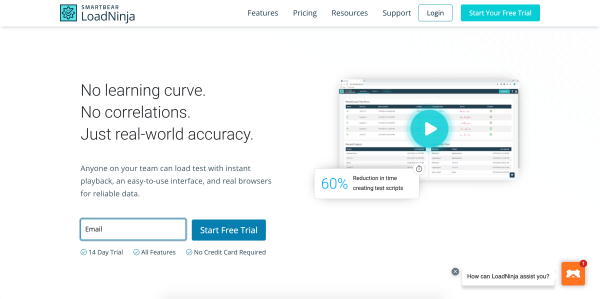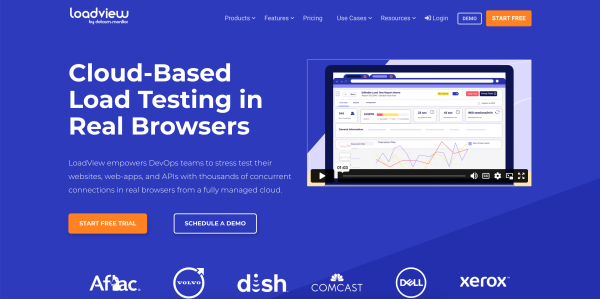Discover the power of performance testing for assessing software effectiveness and stability under high volume usage and users. If you’re a mobile app developer, performance testing is crucial for evaluating output, processing speed, data transmission velocity, network bandwidth utilization, response times, memory usage, and workload efficiency.
Thankfully, there are a variety of tools available for simulating heavy loads on networks, servers, and clusters of servers. These tools are vital for assessing overall software performance and delivering high-quality, robust applications.
In this article, we cover the importance of performance testing tools and popular options, as well as the significance of performance testing for ensuring responsive, scalable, stable, and speedy applications. You will also learn about various types of performance testing, like stress testing, load testing, spike testing, and volume testing.
Embrace performance testing tools and methodologies to evaluate applications effectively, assess server performance within predefined timeframes, measure API responsiveness and stability under heavy loads, and identify performance concerns. Dive into the world of performance testing to optimize the quality and performance of your software applications.
How Do Performance Testing Tools Work?
Performance testing tools assist users and developers in creating new apps from the source code by simulating a high load on a network, server, or cluster of servers. These tools evaluate software and apps’ overall performance under different loads; this is a vital process for ensuring the quality of the software.
Importance of Performance Testing Tools
Teams can evaluate the app’s behavior and determine if the server serves the user with data within a predefined time frame thanks to performance tests like load and stress tests. It also helps evaluate the API’s responsiveness and stability under heavy load.
Performance Testing Tools
1. LoadNinja


LoadNinja by SmartBear allows you to rapidly build scriptless sophisticated load tests that replace load emulators and collect meaningful web data. Specifically, testers can record user interactions easily, fix problems instantly, and spot performance concerns immediately. By skipping the labor-intensive steps of script scrubbing, translation, and dynamic correlation, teams using LoadNinja can boost test coverage without compromising quality.
Features
- Use InstaPlay recorder to create load tests without scripts
- Perform real-world browser load testing at scale
- Use VU Debugger to quickly and easily correct any issues encountered during testing
- Monitor the actions of your virtual users in real time with VU Inspector
- Forget about buying, and maintain your server with cloud hosting
- Web-based analytics and reports that use superior metrics
2. HeadSpin


HeadSpin gives its users access to the best mobile app performance testing resources currently accessible. The HeadSpin platform allows users to identify and fix app performance issues across various networks, apps, and devices.
Features
- Monitor and enhance functionality throughout the user’s experience constantly
- Precise, up-to-date information that accurately tracks data from thousands of locations, networks, and devices
- Advanced AI testing capabilities to identify performance concerns during test automation
3. LoadView


LoadView’s fully managed performance testing tool eliminates all headaches typically associated with load and stress testing. Unlike other load-testing tools, LoadView uses real browsers to generate data that is remarkably close to what would be seen from real users.
Features
- No contracts to sign; you pay for the resources you utilize
- Set up and deploy LoadView in minutes, which is entirely cloud-based
- Global cloud-based architecture, point-and-click scripting ability, and testing on real browsers.
4. Eggplant


Keysight’s Eggplant Software is a protocol-agnostic, open, and extensible performance testing platform. It’s designed to take on new challenges. Using this method, Eggplant Software has reduced its IT budget, increased productivity by automating repetitive tasks, expanded its test coverage, and decreased its time to market.
Features
- Intuitive and able to do real-world, user-centric performance testing
- Simulate users on application and network protocol levels providing a deep understanding of the global effect of UX
- Do smart tests by automatically making and keeping test assets
- Powerful reporting and analysis tools
Significance of Performance Testing
The responsiveness, scalability, stability, and speed of an application under a certain workload are all factors that testers can measure through performance testing; this is a vital step in ensuring high-quality software. Performance testing aims to evaluate various aspects of a program, including its output, processing speed, file transfer rate, network bandwidth usage, number of visitors, memory usage, workload efficiency, and reaction times.
Performance Testing Types
The following are several performance categories that you can use to evaluate the responsiveness and stability of a web application under varying loads.
Stress Testing
To determine if a program can withstand abnormal conditions, known as “stress,” it must first be tested under normal conditions. Developers perform stress testing on all software to determine the max load a system can handle.
During stress testing, the load is normally increased incrementally. The application has been previously stress-tested under the initial test load. Developers then put the system under further stress by gradually raising the load. Once servers fail to respond to requests, we’ve reached a threshold.
Load Testing
Software load testing is a type of testing that simulates heavy, real-world usage to determine how well a system, program, or application operates under pressure. The goal is to test how well a system copes when numerous people utilize it simultaneously.
Spike Testing
Here, developers increase the loads rapidly and repeatedly to simulate stress. The purpose of spike testing is to evaluate the resilience of a system or program to unexpected spikes and drops in usage.
Volume Testing
Through volume testing, we ensure that the application’s speed is not affected by the sheer volume of data it processes. Developers must enter massive amounts of information into the system to initiate a Volume Test. This testing could be ongoing or periodic.
Final Thoughts
When it comes to evaluating system performance, there isn’t a “one size fits all” tool. Different projects have varying requirements and constraints, making it essential to choose a testing tool that fits your project’s needs. Don’t invest in a tool mindlessly. Consider the adaptability of the set of testing tools mentioned above before selecting the one that best matches the specifics of your project.

























